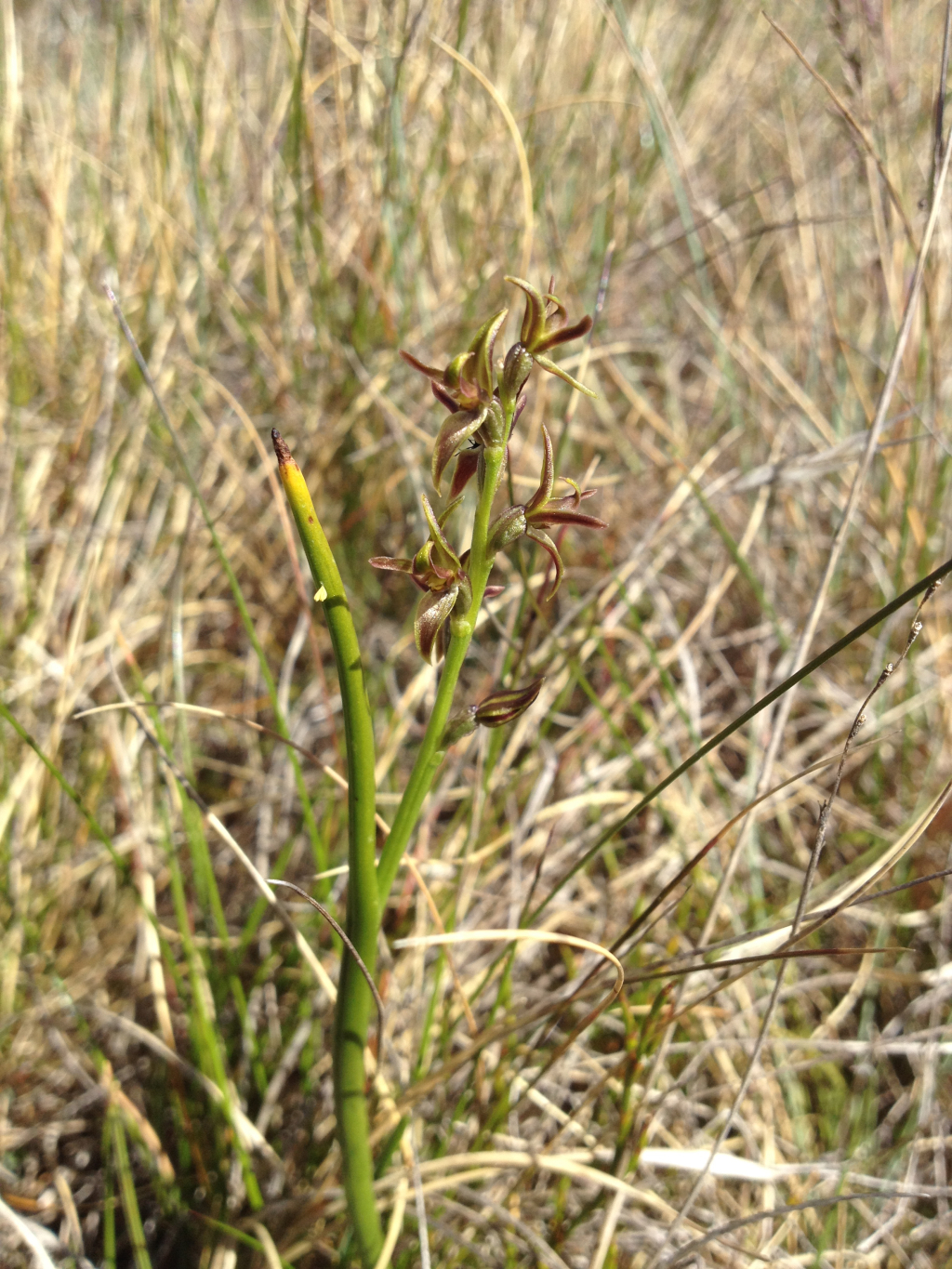Prasophyllum tadgellianum
(R.S.Rogers) R.S.RogersFlowering stem 10-20(–30) cm tall, stout. Leaf-blade to 8 cm long, stiff, turgid, 4–8 mm diam. at base. Flowers 8–20, crowded, dark brownish, often fragrant, in a short spike 5–8 cm long; ovary obovoid, to 4 mm long; sepals 5.5–6.5 mm long, dorsal sepal ovate-lanceolate, acute, lateral sepals usually mostly connate (tips free), with thickened incurved margins and recurved apices; petals linear-lanceolate, 5-5.5 mm long, projecting forward. Labellum 4–5 mm long, subsessile, recurved near middle, greenish, whitish or pink, base orbicular, flat, margins smooth; callus often greenish, prominently raised, covering most of labellum lamina and extending almost to the apex. Column appendages whitish, narrow-oblong, to 1.5 mm long. Flowers Jan.–Mar.
HSF, HNF, MonT, VAlp. Also NSW, ACT, Tas. Confined to alpine and subalpine meadows and snowgum woodlands, often in moist to wet areas among tussock grasses.
Formerly confused with P. alpinum, but that species has smaller, greenish flowers and is confined to Tasmania. Prasophyllum sphacelatum is a more robust species with larger flowers than P. tadgellianum and the leaf-blade is withered at flowering (still stiff and green in P. tadgellianum).
 Spinning
Spinning
